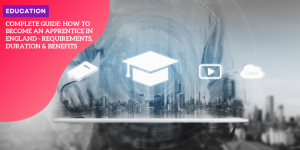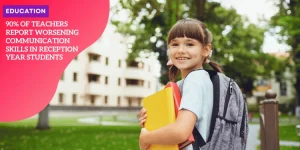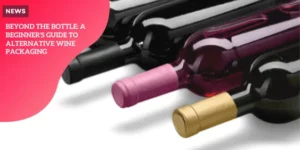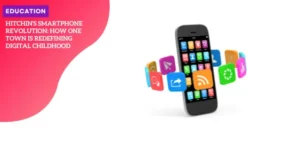Cutting-Edge Technology Transforms Holocaust Education: Testimony 360 Launches in UK Schools
Testimony 360 is a groundbreaking educational initiative brought to life by the Holocaust Educational Trust.
This innovative program uniquely combines digital eyewitness testimony with virtual reality (VR) to make the stories of Holocaust survivors accessible to secondary school students across the UK.
The Vision and Design
At its core, Testimony 360 aims to enhance understanding and preservation of the Holocaust’s history by integrating advanced technology with personal survivor testimonies.
Imagine students having the ability to converse with a Holocaust survivor, learning directly from their experiences, and virtually touring significant Holocaust sites—all without leaving their classroom.
This merging of technology and history brings an unprecedented level of engagement and depth to Holocaust education.
Reaching Students in Secondary Schools
Designed specifically for students in Year 9-13, Testimony 360 supports the curriculums of history, citizenship, and religious studies.
By bringing the lessons of the Holocaust into the contemporary classroom, it ensures that students form a profound, personal connection to this pivotal period in history.
The heart of the program lies in a free in-school workshop where students interact with a digital representation of a Holocaust survivor and utilize VR to explore key historical locations.
Testimony 360 is a pioneering effort that guarantees students not only learn about the Holocaust but also understand the human stories behind it, fostering a deeper appreciation and commitment to remembering the past.
Technology Behind Testimony 360
Volumetric Capture Cameras
The heart of Testimony 360 lies in its cutting-edge technology, starting with the use of volumetric capture cameras to film Holocaust survivors. These advanced cameras record individuals in 3D, allowing them to be digitally recreated with incredible detail.
This method captures not only the words but also the facial expressions, gestures, and emotions of the survivors, providing a more comprehensive and engaging experience for students.
Manfred Goldberg, a 94-year-old Holocaust survivor, spent five days in a special green screen rig answering over 1,000 questions, ensuring a wide range of experiences and emotions were documented.
AI-Powered System
Once the footage is captured, an AI-powered system comes into play.
This system interprets questions from students and retrieves the relevant responses from the recorded sessions.
Essentially, this technology allows students to “converse” with a digital representation of the survivor, providing a personalized and interactive educational experience.
Students can ask questions and receive answers as if they were speaking directly to the survivor, making the historical events more relatable and impactful.
Virtual Reality Headsets
To further enhance the learning experience, Testimony 360 deploys virtual reality (VR) headsets.
These headsets allow students to virtually visit significant Holocaust sites, such as ghettoes and concentration camps mentioned in the survivors’ testimonies.
This immersive aspect provides a deeper connection to the historical events, enabling students to visualize the environments and understand the gravity of the situations discussed.
This innovative use of technology ensures that the stories and experiences of Holocaust survivors remain accessible and impactful for future generations.
By combining volumetric capture, AI, and VR, Testimony 360 not only preserves these crucial narratives but also makes them more engaging and memorable for students today.
Moving forward, Testimony 360 will continue to expand its library of survivor testimonies, ensuring that a diverse range of stories is available for students to learn from.
Program Structure and Implementation
Testimony 360 is structured as a three-part program designed to provide a comprehensive educational experience.
The goal is to ensure that students gain a deep, personal understanding of the Holocaust, supported by history, citizenship, and religious studies curriculums.
Introduction to Testimony 360
The first part is an introductory session where teachers use a specially designed Teacher Pack to prepare students.
This pack includes background information, context about the Holocaust, and details about the survivors whose testimonies they will hear.
This preliminary step sets the stage for the more interactive components of the program, cultivating a respectful and informed atmosphere.
Interactive Workshop
The heart of Testimony 360 lies in its interactive workshop. Lasting 2.5 hours, this session is led by the Testimony 360 team and engages students in an immersive learning experience.
The workshop features digital eyewitness testimonies and employs virtual reality (VR) technology.
Students have a conversational experience with a digital representation of a survivor, such as Manfred Goldberg, who answers over 1,000 pre-recorded questions using an AI-powered system.
Additionally, students can virtually visit key Holocaust sites, enriching their understanding of historical events.
Reflection Session
Following the workshop, a reflection session helps students process what they’ve learned.
Teachers use materials provided by the Holocaust Educational Trust to guide students in reflecting on the testimonies and the VR experiences.
This reinforcement phase ensures that the lessons resonate deeply and encourages thoughtful discussion.
The program effectively supports various curriculums, making it a versatile educational tool.
By combining historical content, personal stories, and modern technology, Testimony 360 creates an unparalleled learning environment that leaves a lasting impact on students and educators alike.
Engaging with these personal stories not only educates but also preserves them for future generations, keeping the essence of Holocaust education vibrant and relevant.
Impact on Students and Teachers
Personal Connection to Holocaust Survivors
Testimony 360 offers students a rare chance to connect on a personal level with Holocaust survivors through advanced digital means.
By interacting with a digital representation of survivors like Manfred Goldberg, students experience firsthand accounts that are both moving and memorable.
Goldberg himself called the technology a “form of magic,” emphasizing that the immortalization of his story helps students understand the human aspect of historical events.
Immersive Learning Experience
The program’s use of virtual reality (VR) technology creates an immersive experience that brings historical sites and survivor testimonies into the classroom.
Students can virtually visit concentration camps and ghettos, making history feel real and urgent.
These visits are not just informative but emotionally impactful, providing a deeper understanding of the Holocaust’s gravity.
Positive Feedback
Both students and teachers have praised Testimony 360 for its high-quality, engaging format.
A secondary teacher from Leeds described the session as “truly outstanding,” noting its well-paced structure and the deep engagement it fostered among students.
A Year 10 student from London said the experience gave the Holocaust a personal meaning, connecting it to “a real, visible person instead of a name in a textbook.”
Such feedback highlights the program’s success in making Holocaust education both effective and affective.
The next area we will explore continues the importance of this program: future-proofing Holocaust education to ensure that testimonies remain relevant and impactful for generations to come.
Future-Proofing Holocaust Education
Preserving Survivors’ Testimonies for Future Generations
One of the most powerful aspects of Testimony 360 is its commitment to preserving the stories of Holocaust survivors for future generations.
By using cutting-edge volumetric capture cameras, the program immortalizes the firsthand accounts of survivors in a way that traditional methods simply can’t match.
These digital testimonies ensure that the voices of survivors like Manfred Goldberg continue to educate and impact students long after they are gone.
Expanding the Program with More Survivor Stories
Recognizing the importance of diverse narratives, Testimony 360 is continually expanding its repository of survivor testimonies.
The inclusion of more stories provides students with a richer and more nuanced understanding of the Holocaust.
This approach not only broadens the scope of historical knowledge but also deepens the emotional impact on students.
The program’s goal is to include a variety of experiences, ensuring a comprehensive educational tool.
Ensuring Continued Awareness and Understanding
By integrating advanced technology with educational initiatives, Testimony 360 keeps the lessons of the Holocaust relevant and engaging for each new generation.
The program’s immersive experiences compel students to reflect on the past and its implications for the present and future.
This ongoing engagement helps to foster a deeper awareness and understanding of the Holocaust, which is essential for preventing similar atrocities.
Testimony 360’s dedication to preserving and expanding survivor testimonies ensures that the lessons of the Holocaust will continue to resonate powerfully with students across the UK.
Getting Involved with Testimony 360
Open to Schools in England, Scotland, and Wales
Testimony 360 offers an incredible opportunity for schoolsacross England, Scotland, and Wales to engage with Holocaust history in a profoundly impactful way.
Through this program, students can interact directly with the digital representations of Holocaust survivors, making history come alive right in their classrooms.
Booking Free Workshops
Good news for educators: Testimony 360 workshops are free and currently open for booking!
These workshops are designed for students from Year 9 to Year 13 and support the history, citizenship, and religious studies curriculums.
The in-school workshops provide an unforgettable experience where students can ask questions to a digital representation of a survivor, such as Manfred Goldberg.
This interaction is made possible by cutting-edge AI technology that plays back relevant responses, giving students a truly engaging and immersive experience.
Engaging with Holocaust History
Participating in Testimony 360 allows students to connect to the Holocaust on a personal level.
They don’t just read about history; they get to hear it first-hand from those who lived through it, albeit in a digital format.
Feedback from schools that have piloted the program has been overwhelmingly positive.
For instance, a Year 10 student from London remarked, “It gave the Holocaust personal meaning as it connected to a real, visible person instead of a name in a textbook.”
Not only do these workshops cover survivor testimonies, but they also include virtual reality tours of significant Holocaust sites, such as concentration camps and ghettos, enhancing students’ understanding in a tangible way.
Schools interested in bringing this program to their students can easily register for these free workshops.
The Holocaust Educational Trust has made the process straightforward and accessible, ensuring that as many students as possible can benefit from this groundbreaking initiative.
By participating in Testimony 360, schools ensure that the lessons of the Holocaust are remembered and appreciated by future generations.
This innovative use of technology not only honors the past but also aims to educate and inspire a more empathetic and informed youth.






